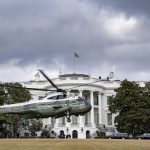President Donald Trump’s sweeping tariffs, including a 25% levy on auto imports, have sparked a heated debate over their potential impact on the U.S. economy and global trade. Dubbed “Liberation Day” by the administration, these tariffs aim to bolster domestic manufacturing and reduce America’s trade deficit, which Trump has characterized as a national emergency. The measures are part of his broader strategy to reassert economic sovereignty and restore industrial strength, particularly in sectors like automotive manufacturing.
Trump’s tariffs are designed to incentivize companies to relocate production back to the United States, promising a resurgence of American jobs and factories. The auto industry, long considered a cornerstone of U.S. manufacturing, is expected to benefit from these policies as foreign automakers face higher costs to export vehicles into the country. Trump has assured Americans that this approach will lead to “jobs and factories roaring back,” potentially revitalizing communities that have suffered from decades of industrial decline.
However, critics warn that the tariffs could backfire by raising prices for consumers and disrupting global supply chains. With nearly half of all vehicles sold in the U.S. being imported, higher costs on foreign cars could strain household budgets already impacted by inflation. Additionally, the complexity of modern automotive supply chains—where parts often cross multiple borders before final assembly—means that even domestically produced cars might see price increases due to higher costs for imported components.
Beyond their economic implications, Trump’s tariffs are also being leveraged as a geopolitical tool. By targeting countries with significant trade surpluses with the U.S., such as China and Germany, the administration hopes to extract concessions on issues ranging from market access to national security. This aggressive stance has drawn criticism from international leaders but also signals a shift away from decades of globalization toward a more protectionist trade policy.
While supporters argue that these measures are necessary to level the playing field for American workers and industries, skeptics highlight the risks of retaliation from trading partners and potential job losses in sectors reliant on exports. The tariffs also raise questions about whether they can achieve their intended goals without causing broader economic harm. As the effects of these policies unfold, the nation remains divided over whether this bold approach represents a path to renewed prosperity or an economic gamble with uncertain outcomes.
In the end, Trump’s tariff strategy underscores his commitment to prioritizing American interests in global trade. Whether this will usher in a “golden age” for American workers or exacerbate economic challenges remains to be seen. What is clear is that this policy marks a pivotal moment in U.S. trade history, one that will shape both domestic industries and international relations for years to come.




